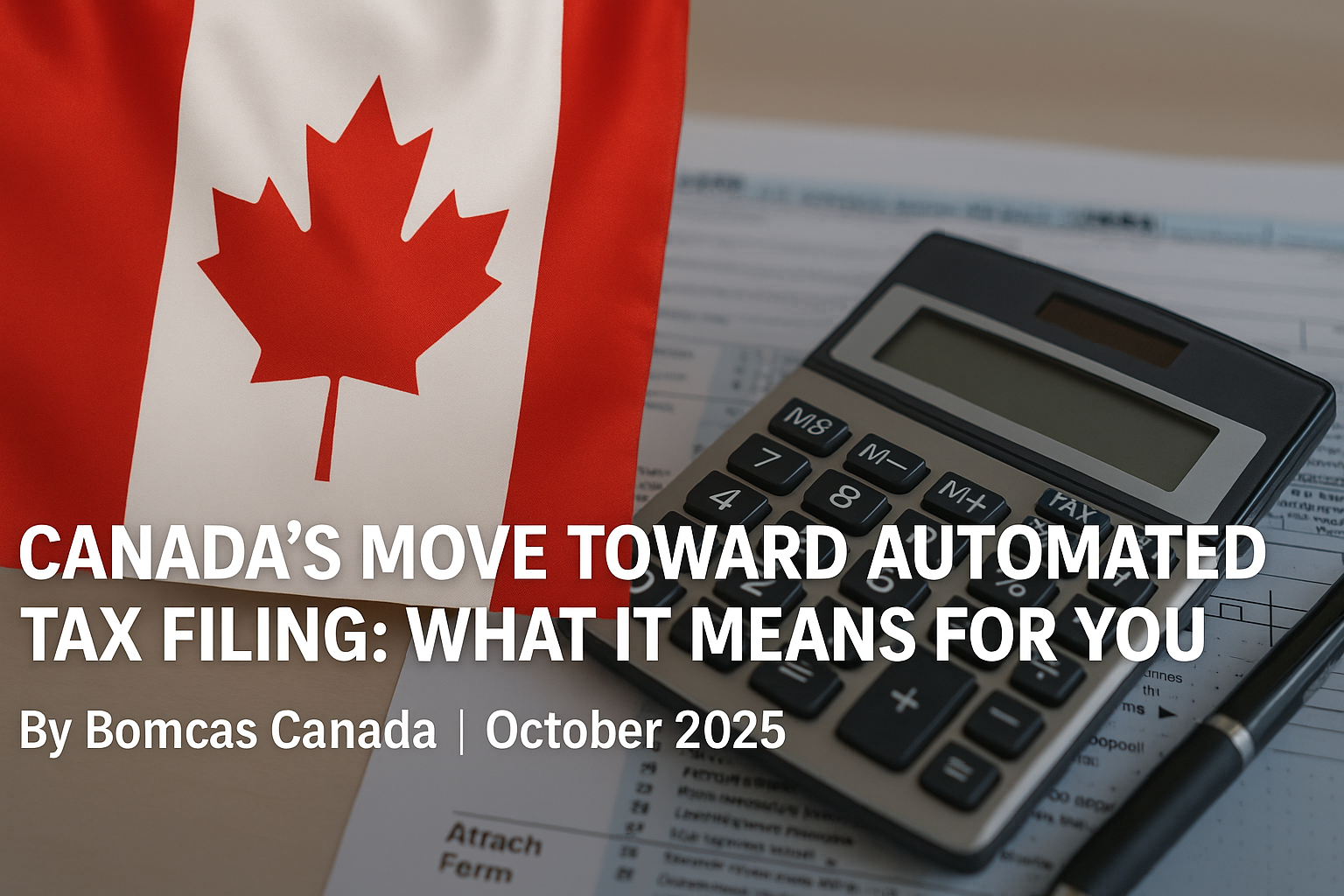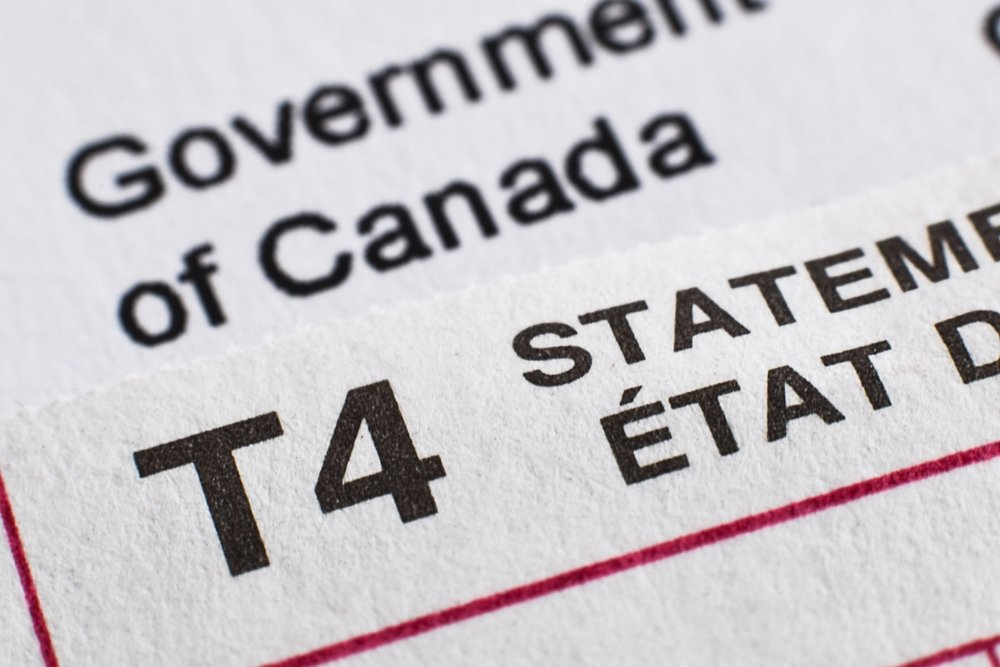As we approach 2024, understanding Saskatchewan personal income tax becomes crucial for residents of the province. We at BOMCAS, your trusted Saskatchewan personal income tax accountants, recognize the importance of staying informed about the latest changes in tax legislation. Our goal is to provide you with a comprehensive overview of the tax landscape, helping you navigate the complexities of provincial income tax rates and federal tax brackets in Canada.
In this article, we’ll explore Saskatchewan’s tax brackets for 2024 and break down how the tax system works in the province. We’ll also delve into key provincial tax credits, Saskatchewan-specific deductions, and guide you through the process of filing your Saskatchewan tax return. By the end, you’ll have a clearer picture of your taxable income, potential savings through credits like the first-time homebuyers’ amount, and how to make the most of your hard-earned money in the face of evolving tax regulations.

Saskatchewan’s Tax Brackets for 2024
As we approach 2024, it’s crucial for Saskatchewan residents to understand the provincial income tax rates that will affect their finances. We at BOMCAS, your trusted Saskatchewan personal income tax accountants, are here to break down the tax brackets and rates for the upcoming year.
Tax rates
Saskatchewan’s personal income tax system operates on a progressive scale, meaning that as your income increases, so does your tax rate. For 2024, the province has maintained its three-tier tax structure:
- 10.5% on the first CAD 72,255.12 of taxable income
- 12.5% on the next CAD 134,187.69 (income between CAD 72,255.12 and CAD 206,442.82)
- 14.5% on any income over CAD 206,442.82
These rates apply to your taxable income after considering various deductions and credits.
Income thresholds
The income thresholds for each tax bracket have been adjusted for 2024 to account for inflation. This indexation helps to prevent “bracket creep,” where inflation pushes taxpayers into higher tax brackets without a real increase in purchasing power.
To put this into perspective, if your taxable income is CAD 100,000, you’ll pay:
- 10.5% on the first CAD 72,255.12
- 12.5% on the remaining CAD 27,744.88
It’s important to note that these are just the provincial rates. To get the full picture of your tax obligations, you’ll need to factor in federal tax rates as well.
Comparison to 2023
When we compare the 2024 tax brackets to those of 2023, we see a notable change. The income thresholds have increased by 4.7%, matching the national rate of inflation. This adjustment means that taxpayers can earn slightly more in 2024 before moving into a higher tax bracket.
For instance, in 2023, the first tax bracket threshold was lower, allowing less income to be taxed at the lowest rate. This increase provides a small but welcome relief for many Saskatchewan taxpayers.
Comparison to 2022
Looking back to 2022, we can see a more significant shift in the tax landscape. The indexation rate for 2022 was 2.4%, considerably lower than the 4.7% for 2024. This difference highlights the impact of recent economic changes on tax policy.
In 2022, the income thresholds were lower across all brackets. For example, the top bracket in 2022 began at a lower income level compared to 2024, meaning high-income earners will see a slight advantage in the coming year.
It’s worth noting that while tax brackets have changed, Saskatchewan has maintained its basic tax credit amounts. For 2024, the basic personal amount stands at CAD 25,665.51, providing a tax reduction for all taxpayers.
As your Saskatchewan personal income tax accountants, we at BOMCAS understand that these changes can have a significant impact on your financial planning. We’re here to help you navigate these adjustments and make the most of your hard-earned money.
Remember, while understanding tax brackets is important, it’s just one piece of the puzzle. Factors such as tax credits, deductions, and your overall financial situation all play a role in determining your final tax bill. In the following sections, we’ll delve deeper into these aspects to give you a comprehensive view of Saskatchewan’s personal income tax landscape for 2024.
How Saskatchewan’s Tax System Works
As Saskatchewan personal income tax accountants, we at BOMCAS understand that grasping the intricacies of the provincial tax system is crucial for residents. Saskatchewan’s tax system operates in conjunction with the federal income tax system, administered by the Canada Revenue Agency (CRA). Let’s break down the key components to help you better understand how it works.
Taxable income calculation
Your taxable income is the foundation of your tax obligations in Saskatchewan. To determine this figure, we start with your total income, which includes various sources such as employment earnings, self-employment income, investment returns, and government benefits. From this total, we subtract eligible deductions to arrive at your taxable income.
For example, if you’re an employee, your gross monthly wages, including overtime, tips, allowances, and bonuses, form the basis of your income calculation. Self-employed individuals must account for their business income as well. It’s important to note that certain pre-tax contributions, like those made to a Registered Retirement Savings Plan (RRSP), can reduce your taxable income.
Basic personal amount
One of the first tax breaks you’ll encounter is the basic personal amount (BPA). This is an allowable amount of income you can earn before you start paying taxes. For the 2024 tax year, the Saskatchewan BPA is set at CAD 25,665.51. This amount provides a tax reduction for all taxpayers, effectively lowering the overall tax burden for residents.
Progressive tax structure
Saskatchewan employs a progressive tax structure, which means that as your income increases, so does your tax rate. For 2024, the province has maintained its three-tier tax system:
- 10.5% on the first CAD 72,255.12 of taxable income
- 12.5% on the next CAD 134,187.69 (income between CAD 72,255.12 and CAD 206,442.82)
- 14.5% on any income over CAD 206,442.82
This structure ensures that individuals with higher incomes contribute a larger percentage of their earnings in taxes. It’s worth noting that these rates apply to your taxable income after considering various deductions and credits.
To put this into perspective, if your taxable income is CAD 100,000, you’ll pay 10.5% on the first CAD 72,255.12 and 12.5% on the remaining CAD 27,744.88. However, remember that these are just the provincial rates. To get the full picture of your tax obligations, you’ll need to factor in federal tax rates as well.
The combined federal and provincial tax rates in Saskatchewan range from 25.5% to 47.5%, depending on your income level. These rates are applied to different portions of your income, creating a marginal tax rate system where you pay higher taxes on the income that falls into higher tax brackets.
It’s important to understand that taxes are typically withheld from employees’ paychecks by their employers and remitted to the CRA. If you’re self-employed, you’re responsible for calculating and paying your own taxes.
At BOMCAS, we help our clients navigate this system, ensuring they take advantage of all available deductions and credits to minimize their tax liability while remaining compliant with Saskatchewan’s tax laws. Understanding how the tax system works is the first step in effective financial planning and making the most of your hard-earned money.
Key Provincial Tax Credits
As Saskatchewan personal income tax accountants, we at BOMCAS understand the importance of maximizing your tax savings. Saskatchewan offers several provincial tax credits that can significantly reduce your tax burden. Let’s explore some of the key credits available to residents for the 2024 tax year.
Home renovation tax credit
The Saskatchewan Home Renovation Tax Credit has been a valuable benefit for homeowners looking to improve their properties. However, it’s important to note that this credit has undergone changes. The temporary two-year measure introduced in 2020 has expired. However, there’s good news on the horizon. A re-elected Saskatchewan Party government has proposed to make this credit permanent, allowing homeowners to claim a provincial income tax credit of up to CAD 5,552.00 in renovation expenses each year. This could result in savings of up to CAD 582.96 annually.
While we await confirmation of this proposal, it’s crucial to keep track of your home renovation expenses. Eligible expenses typically include the cost of labor, professional services, building materials, fixtures, equipment rentals, and permits. Remember, renovations must be to your principal residence located in Saskatchewan to qualify.
Low-income tax credit
The Saskatchewan Low-Income Tax Credit (SLITC) is a fully refundable, non-taxable benefit designed to assist residents with low and modest incomes. For the period from July 2024 to June 2025, the program provides:
- CAD 552.42 for an individual
- CAD 552.42 for a spouse or common-law partner (or for an eligible dependent)
- CAD 217.92 per child (maximum of two children)
This means a family could receive an annual credit of up to CAD 1,540.68. It’s important to note that the credit starts to be reduced when the adjusted family net income exceeds CAD 52,166.60. Families with adjusted family net income between CAD 52,166.60 and CAD 108,190.45 may receive a partial credit.
One of the best features of this credit is that you don’t need to apply separately. The Canada Revenue Agency (CRA) will automatically determine your eligibility based on your income tax return. The payments are combined with the quarterly federal GST/HST credit payments, making it convenient for recipients.
Volunteer firefighters and first responders credit
Saskatchewan recognizes the invaluable contribution of volunteer firefighters and first responders through a dedicated tax credit. Starting from the 2020 tax year, the Government of Saskatchewan has been providing a CAD 416.400 tax credit for eligible volunteers.
To qualify for this credit, volunteers must have completed at least 200 hours of service in the tax year. This requirement might seem daunting, but as the President of Saskatchewan Volunteer Firefighters Association, points out, it’s quite achievable for most volunteers. The credit covers various activities, including responding to and being on call for emergency calls, attending meetings, and participating in required training.
This credit serves two important purposes. First, it acknowledges the time and effort put in by these dedicated volunteers. Second, it may help in recruiting more volunteers, especially in smaller communities where resources are often limited.
At BOMCAS, we’re here to help you navigate these provincial tax credits and ensure you’re taking full advantage of the benefits available to you. Remember, understanding and utilizing these credits can make a significant difference in your overall tax liability. As your trusted Saskatchewan personal income tax accountants, we’re committed to helping you maximize your tax savings while staying compliant with provincial tax laws.
Saskatchewan-Specific Deductions
We at BOMCAS, as Saskatchewan personal income tax accountants, understand the importance of maximizing your tax savings. Saskatchewan offers several unique deductions that can significantly reduce your taxable income. Let’s explore some of the key deductions available to residents for the 2024 tax year.
Graduate retention program
The Graduate Retention Program (GRP) has a significant impact on Saskatchewan personal income tax for eligible graduates. This program provides a rebate of up to CAD 27,760.00 of tuition fees paid by graduates who live in Saskatchewan and file a Saskatchewan income tax return. The rebate is paid out over seven years, helping to reduce the amount of provincial income tax you owe.
The maximum tuition rebate varies based on your program:
- 1-year Certificate, Diploma, or Journeyperson: CAD 4,164.00
- 2 or 3-year Certificate or Diploma: CAD 8,883.20
- 3-year Undergraduate Degree: CAD 20,820.00
- 4-year Undergraduate Degree: CAD 27,760.00
To be eligible, you must have graduated from an approved post-secondary program and applied within seven years of graduation. It’s important to note that graduates from 2017 and earlier are no longer eligible to apply, while graduates from 2018 have until April 30, 2025, to apply.
First-time home buyers tax credit
Saskatchewan offers a First-Time Homebuyers’ Tax Credit to help residents entering the housing market. This provincial non-refundable income tax credit can provide up to CAD 1,492.10 in tax savings. To claim this credit, you must meet specific requirements:
- The qualifying home must be located in Saskatchewan and registered in your name (and/or your spouse’s name, if applicable).
- You must not have lived in another home owned by you or your spouse in the year of purchase or in the previous four years.
- You must occupy the home as your principal residence no later than one year after purchase.
The credit is calculated as 10.75% of CAD 13,880.00, which is typically applied towards the down payment of your first home. Both you and your spouse can claim a portion of the tax credit, as long as the combined amount doesn’t exceed the maximum claimable.
It’s worth noting that if you received a loan through the Graduate Retention Program First Home Plan, you can’t claim this tax credit.
Employment supplement
The Saskatchewan Employment Supplement (SES) is a monthly payment designed to assist lower-income working families with the cost of raising children. While not a deduction in the traditional sense, it’s an important benefit that can impact your overall financial picture.
Key points about the SES include:
- It’s a tax-free benefit.
- It adds to income from employment, farming, self-employment, or child or spousal support.
- Benefits are calculated based on your family’s gross income from the previous month and the number of children under age 13 in your family.
However, it’s important to note that as of January 2024, the SES program is closed to new applicants. It’s being replaced by the Saskatchewan Employment Incentive (SEI) program, which supports working families with low incomes. Current SES clients will continue to receive benefits as long as they meet the eligibility criteria while the program remains open.
As your trusted Saskatchewan personal income tax accountants, we at BOMCAS are here to help you navigate these deductions and credits. We understand that maximizing these benefits can have a significant impact on your overall tax liability and financial well-being. Remember, understanding and utilizing these Saskatchewan-specific deductions is crucial in making the most of your hard-earned money while staying compliant with provincial tax laws.
Filing Your Saskatchewan Tax Return
As Saskatchewan personal income tax accountants, we at BOMCAS understand the importance of filing your tax return correctly and on time. Let’s break down the process to make it easier for you to navigate.
Required forms
To file your Saskatchewan personal income tax return, you’ll need to complete the TD1SK form, also known as the Saskatchewan Personal Tax Credits Return. This form helps your employer or payer determine the amount of provincial tax deductions. It’s crucial to fill out this form accurately, especially if you have taxable income in Saskatchewan and any of the following apply:
- You have a new employer or payer
- You want to change previously claimed amounts
- You want to increase the amount of tax deducted at source
Remember, if you don’t fill out Form TD1SK, your employer or payer will deduct taxes after allowing only the basic personal amount.
Important deadlines
For most Saskatchewan residents, the deadline to file your personal income tax return is April 30, 2024. By filing on time, you’ll avoid delays in receiving any refunds, benefits, or credit payments you may be entitled to.
If you or your spouse or common-law partner are self-employed, you have until June 15, 2024, to file your tax returns. However, it’s important to note that if you owe money to the Canada Revenue Agency (CRA), you’ll still need to pay by April 30, 2024, to avoid interest charges.
BOMCAS assistance
At BOMCAS, we specialize in Saskatchewan personal income tax and can provide valuable assistance throughout the filing process. Our team of experienced accountants can help you:
- Understand complex tax regulations
- Maximize your deductions and credits
- Ensure accurate and timely filing
- Navigate any changes in tax laws
We recognize that each taxpayer’s situation is unique, and we tailor our services to meet your specific needs.
Sample Personal Tax Return calculation
To give you a better understanding of how your Saskatchewan personal income tax is calculated, let’s walk through a simplified example:
Assumptions:
- Total remuneration: CAD 110,000
- Capital gains: CAD 16,000
- Interest income: CAD 11,000
Step 1: Calculate net income Net income = Salary + Interest + Taxable capital gain – Deductions Net income = CAD 110,000 + CAD 11,000 + (CAD 16,000 / 2) – CAD 838 = CAD 128,162
Step 2: Apply federal and provincial tax rates Federal tax before credits: CAD 24,104 Provincial (Saskatchewan) tax before credits: CAD 12,816
Step 3: Apply personal credits and deductions After applying various credits and deductions, the final tax amounts are: Federal income tax: CAD 17,814 Saskatchewan tax: CAD 8,011
Total income tax: CAD 25,825
Sample Personal Tax Return Filing
When filing your Saskatchewan personal income tax return, you have several options:
- File electronically using NETFILE, which opens on February 19, 2024. This method is fast, secure, and convenient.
- Mail your return to: Winnipeg Tax Center Post Office Box 14001, Station Main Winnipeg MB R3C 3M3
- Use the Saskatchewan Electronic Tax Service (SETS) for a secure and efficient filing process.
Remember, even if you have no tax to report for the period, you must still file a “NIL” return.
At BOMCAS, we’re here to guide you through every step of filing your Saskatchewan personal income tax return. Our expertise ensures that you’ll maximize your benefits while staying compliant with all provincial and federal tax regulations.
Conclusion
As we wrap up our exploration of Saskatchewan’s personal income tax landscape for 2024, it’s clear that staying informed about tax brackets, credits, and deductions is crucial for effective financial planning. The progressive tax structure, coupled with various provincial credits like the Home Renovation Tax Credit and the Low-Income Tax Credit, offers opportunities to reduce your tax burden. It’s also worth noting that programs like the Graduate Retention Program and the First-Time Homebuyers’ Tax Credit can have a significant impact on your finances.
To make the most of these benefits and navigate the complexities of tax filing, it’s wise to seek expert guidance. BOMCAS, as your go-to Saskatchewan personal income tax accountant, is well-equipped to help you maximize your tax savings while ensuring compliance with provincial and federal regulations. Why not let BOMCAS be your trusted partner to prepare and file your personal tax return in Saskatchewan? Remember, proper tax planning isn’t just about meeting deadlines; it’s about making your hard-earned money work harder for you in the long run.










 View Our Location
View Our Location





 181 Meadowview Bay, Sherwood Park, AB T8H 1P7, Canada (Online Clients Only)
181 Meadowview Bay, Sherwood Park, AB T8H 1P7, Canada (Online Clients Only)